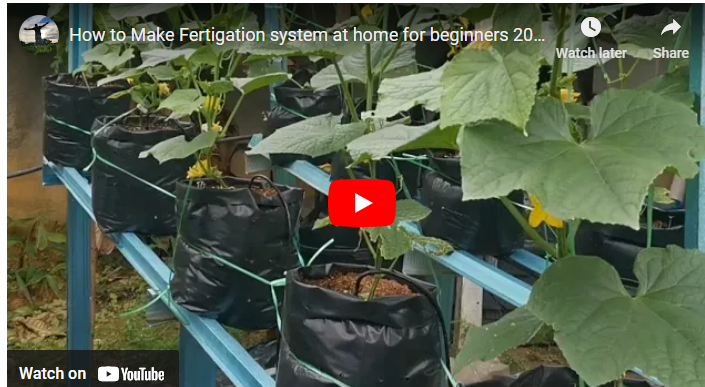In modern agriculture, maximizing crop yields while minimizing resource consumption is a constant challenge. Fertigation, a technique that combines irrigation and fertilization, has emerged as a game-changer in the agricultural industry.
This article will delve into the concept of fertigation, its benefits, components of a fertigation system, types of fertilizers used, designing considerations, various techniques, management practices, environmental considerations, case studies, and future trends.
Fertigation in Agriculture – All You Need to Know
What is Fertigation?
Fertigation is a method of delivering fertilizers to crops through an irrigation system. It involves the precise application of water-soluble or liquid fertilizers directly to the root zone of plants during the irrigation process.
This technique allows for the controlled release of nutrients, ensuring that plants receive the right amount at the right time.
Benefits of Fertigation
Fertigation offers numerous advantages for both farmers and the environment. Firstly, it increases nutrient efficiency by minimizing losses due to leaching or volatilization. The targeted delivery of fertilizers enhances plant uptake, resulting in improved crop yield and quality.
Also, fertigation promotes water conservation by reducing water runoff and evaporation. Moreover, it helps in minimizing fertilizer waste, thus reducing costs and environmental impact.
Components of a Fertigation System
A fertigation system comprises several essential components. The irrigation system, such as drip, sprinkler, or pivot, delivers water to the crops. The fertilizer injector accurately mixes the fertilizers with the irrigation water.
A reliable water source and storage system ensure an adequate supply. Finally, the fertilizer tanks store the fertilizers for injection into the irrigation system.
Types of Fertilizers Used in Fertigation
Various types of fertilizers can be used in fertigation, depending on crop requirements and soil conditions. Water-soluble fertilizers are commonly used as they readily dissolve in water, allowing for efficient nutrient uptake.
Controlled-release fertilizers release nutrients slowly over an extended period, reducing the frequency of application. Organic fertilizers derived from natural sources are also utilized, offering long-term soil health benefits.
Designing a Fertigation System
Designing an effective fertigation system involves several considerations. Understanding the nutrient requirements of the crops is crucial. Analyzing the quality of the water source is essential to prevent clogging or chemical reactions. Selecting the appropriate fertilizer formulation is vital to match crop needs. Calibration of the fertilizer injector ensures accurate nutrient delivery to avoid over- or under-fertilization.
Fertigation Techniques
There are various fertigation techniques available, each suitable for specific crops and field conditions. Surface fertigation involves applying fertilizers to the soil surface, followed by irrigation.
Subsurface drip fertigation places the irrigation and fertilization directly into the root zone through buried drip lines. Sprinkler fertigation applies fertilizers through overhead sprinklers, while pivot fertigation integrates fertigation with mechanized irrigation systems.
Managing Fertigation Practices
Proper management of fertigation practices is crucial to ensure optimal results. Regular monitoring of nutrient levels in the soil and plant tissue helps in adjusting fertilization schedules. Developing an appropriate irrigation schedule based on crop needs and environmental factors is essential.
Maintenance of equipment, including injector cleaning and calibration, ensures consistent nutrient delivery. Understanding and troubleshooting common fertigation issues, such as clogging or injector malfunction, helps in preventing yield loss.
Environmental Considerations
While fertigation offers numerous benefits, it is essential to consider potential environmental impacts. Groundwater contamination can occur if fertilizers are over-applied or if there is poor irrigation management. Fertilizer runoff into water bodies can lead to eutrophication and harm aquatic ecosystems. Implementing best management practices, such as precision application and regular monitoring, helps mitigate these risks.
Case Studies: Successful Fertigation Applications
Numerous real-world examples demonstrate the effectiveness of fertigation. Case studies highlighting different crops, regions, and fertigation techniques showcase its impact on crop productivity and resource efficiency.
These success stories serve as inspiration and provide valuable insights for farmers considering the adoption of fertigation practices.
Future Trends in Fertigation
The field of fertigation continues to evolve, driven by advancements in technology and sustainability demands. Emerging trends include the use of sensors and automation to optimize nutrient delivery, precision fertigation based on plant signals, and the integration of fertigation with smart farming systems. These innovations promise to further enhance crop performance while minimizing environmental footprints.
Is fertigation suitable for all crops?
Fertigation can be used for a wide range of crops, including fruits, vegetables, field crops, and ornamentals. However, it is essential to consider specific crop requirements and adapt the fertigation system accordingly.
Does fertigation require specialized equipment?
Fertigation systems can range from simple setups to more complex configurations. While specialized equipment such as fertilizer injectors may be necessary, they are readily available and can be integrated into existing irrigation systems.
Can fertigation save water compared to traditional fertilization methods?
Yes, fertigation can significantly conserve water compared to traditional methods such as broadcasting or foliar application. The precise delivery of water and nutrients directly to the root zone reduces water runoff and evaporation.
What are the potential risks associated with fertigation?
The main risks include groundwater contamination and the release of fertilizers into water bodies. However, these risks can be mitigated through proper management practices, including monitoring, calibration, and adherence to best management practices.
How can I get started with fertigation on my farm?
To implement fertigation, it is advisable to consult with agricultural experts or agronomists who can assess your specific needs and provide guidance on system design, fertilizer selection, and management practices.
Conclusion
Fertigation has revolutionized agricultural practices by combining irrigation and fertilization into a single, efficient process. It offers significant benefits such as increased nutrient efficiency, improved crop yields, water conservation, and reduced fertilizer waste.
By understanding the components of a fertigation system, selecting the right fertilizers, and implementing appropriate management practices, farmers can optimize their crop production while minimizing resource consumption. Fertigation represents a sustainable and forward-thinking approach to modern agriculture.




